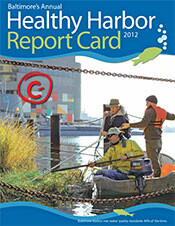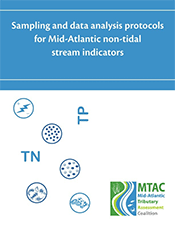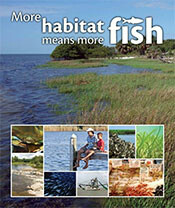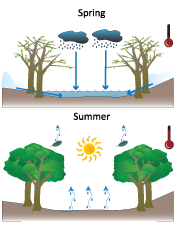Baltimore Healthy Harbor Report Card rates a C- for 2012
 The Waterfront Partnership of Baltimore and Blue Water Baltimore published this Healthy Harbor Report Card to help lead the public, government, and businesses toward a healthy Baltimore Harbor, one that is swimmable and fishable by 2020. Using water quality indicators, the health condition of the Harbor was determined for 2012. Human health indicators are also discussed in the report card. This newsletter provides the overall results, and describes how the public has been helping clean up their Harbor as well.
The Waterfront Partnership of Baltimore and Blue Water Baltimore published this Healthy Harbor Report Card to help lead the public, government, and businesses toward a healthy Baltimore Harbor, one that is swimmable and fishable by 2020. Using water quality indicators, the health condition of the Harbor was determined for 2012. Human health indicators are also discussed in the report card. This newsletter provides the overall results, and describes how the public has been helping clean up their Harbor as well.
Sampling and data analysis protocols for Mid-Atlantic non-tidal stream indicators
 EcoCheck, in collaboration with the Mid-Atlantic Tributary Assessment Coalition, prepared this document which provides guidelines for the successful production of non-tidal stream health report cards. Specifically, it develops clear and consistent protocols for the identification, collection, and analysis of indicators to be used by report card-producing organizations in Mid-Atlantic rivers and streams. The overall objective of this protocol document is to encourage and enable comparisons of monitoring results from report card-producing organizations and to increase the scientific validity of report cards as outreach tools. This document is intended for use in non-tidal areas only, as the ecosystem health indicators and thresholds discussed are pertinent only to river and stream ecosystems.
EcoCheck, in collaboration with the Mid-Atlantic Tributary Assessment Coalition, prepared this document which provides guidelines for the successful production of non-tidal stream health report cards. Specifically, it develops clear and consistent protocols for the identification, collection, and analysis of indicators to be used by report card-producing organizations in Mid-Atlantic rivers and streams. The overall objective of this protocol document is to encourage and enable comparisons of monitoring results from report card-producing organizations and to increase the scientific validity of report cards as outreach tools. This document is intended for use in non-tidal areas only, as the ecosystem health indicators and thresholds discussed are pertinent only to river and stream ecosystems.
More habitat means more fish
 Restoring and expanding coastal and estuarine habitat leads to increases in fish populations, which have a positive impact on the communities and the industries that depend on thriving and sustainable fisheries. Restore America's Estuaries, with support from the American Sportfishing Association and NOAA Fisheries, collaborated with IAN staff to create this report, which makes a powerful case that investing in our nation's coastlines and estuaries leads to healthy habitat and strong fisheries. This, in turn, has a positive impact on the businesses and industries, both recreational and commercial, that rely healthy fisheries to survive and thrive.
Restoring and expanding coastal and estuarine habitat leads to increases in fish populations, which have a positive impact on the communities and the industries that depend on thriving and sustainable fisheries. Restore America's Estuaries, with support from the American Sportfishing Association and NOAA Fisheries, collaborated with IAN staff to create this report, which makes a powerful case that investing in our nation's coastlines and estuaries leads to healthy habitat and strong fisheries. This, in turn, has a positive impact on the businesses and industries, both recreational and commercial, that rely healthy fisheries to survive and thrive.
IAN Science Communication Course held at Horn Point Lab
 The Integration & Application Network (IAN) held its 2013 Science Communication Course open to all interested individuals. Participants came from all over the Mid-Atlantic region, and included post-docs, graduate students, academic faculty members, town government representatives, technical writers, and resource managers. All were interested in learning how to better communicate scientific principles and results to both scientist and non-scientist audiences. There was a wide range of backgrounds and interests among the participants: technical writing, wildlife ecology, Chesapeake Bay water quality, paleo-oceanography, outreach, and restoration ecology, to name a few. One participant summarized the 3-day course by saying, "A truly fantastic experience: informative, practical, and fun!".
The Integration & Application Network (IAN) held its 2013 Science Communication Course open to all interested individuals. Participants came from all over the Mid-Atlantic region, and included post-docs, graduate students, academic faculty members, town government representatives, technical writers, and resource managers. All were interested in learning how to better communicate scientific principles and results to both scientist and non-scientist audiences. There was a wide range of backgrounds and interests among the participants: technical writing, wildlife ecology, Chesapeake Bay water quality, paleo-oceanography, outreach, and restoration ecology, to name a few. One participant summarized the 3-day course by saying, "A truly fantastic experience: informative, practical, and fun!".